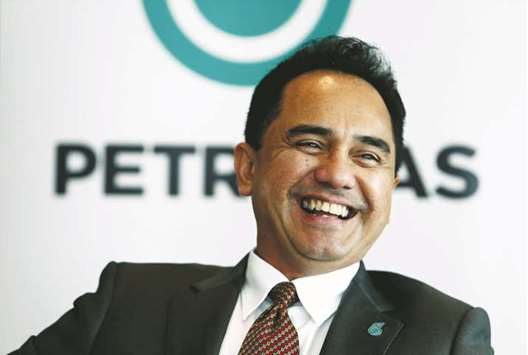Malaysian state energy firm Petronas will focus on a few select markets for expansion, its CEO told Reuters, as it positions itself as leaner and meaner for a medium-term period of relatively low oil prices.
Hurt by a slump in oil prices, Petroliam Nasional Berhad has cut its costs and its spending, deferring some projects in an effort to help profitability in a tough energy market.
Rather than having its operations “scattered all over the place,” CEO Wan Zulkiflee Wan Ariffin wants the company’s geographical profile to be concentrated, he said in an interview yesterday at the Petronas Towers, the world’s tallest twin towers.
“We must have geographical concentration to be more cost effective,” Wan Zulkiflee said.
For its upstream business, Petronas will focus on South East Asia and Canada, where it already has huge reserves, he said, adding that Mexico – where Petronas has recently picked up three blocks – will be another focus.
Petronas last month scrapped a proposed $29bn liquefied natural gas (LNG) terminal project in western Canada because of weak prices.
Oil prices are expected to trade at around current levels in the short- to medium-term, and Petronas is budgeting for Brent crude at $45 per barrel for 2017 and a “few dollars” higher for next year, Wan Zulkiflee said.
Brent crude was trading at about $50 a barrel yesterday.
With oil trading at near 12-year lows early last year, Petronas announced it would cut spending by 50bn ringgit ($11.64bn) over the next four years.
For this year, Petronas is budgeting for capital spending of 60bn ringgit ($13.97bn) – in line with last year, when it actually only spent 50.4bn ringgit.
Much of this year’s spending will be on its Refinery and Petrochemical Integrated Development (RAPID) project in the southern state of Johor, Wan Zulkiflee said. Petronas has also cut the dividend it pays to the government.
It expects to pay 13bn ringgit this year, half its 2015 payout.
Dividends from Petronas, one of Malaysia’s biggest employers and only Fortune 500 company, contributed about 7.5% of the country’s revenue. The cost cutting, including the loss of around 2,300 jobs, helped Petronas post higher profit last year.
Wan Zulkiflee said Petronas has its assets under constant review, and he said earlier this year that Petronas was reviewing some assets in Africa, and exited its liquefied petroleum gas (LPG) business in the Philippines.
“High grading our portfolio is an ongoing process,” he said. “No emotional attachment. If it doesn’t make money, it’s a candidate for us to divest.”
He did not say what other assets Petronas may be looking to sell.
Wan Zulkiflee said RAPID, which some analysts say will be the company’s biggest source of growth in the medium-term, is on track to start in 2019.
The RAPID project, part of the Pengerang Integrated Complex, will contain a 300,000 barrel-per-day oil refinery and a petrochemical complex with capacity to produce 7.7mn metric tonnes a year.
Malaysia’s Pengerang peninsula sits strategically between the Malacca Strait and the South China Sea. Nearly all the Middle East oil and gas bound for North Asia’s industrial powerhouses of China, Japan and South Korea passes through those two bodies of water.
Saudi Aramco has agreed to buy a $7bn stake in RAPID.
“Refinery start-up will be in the (2019) first quarter. For it to go into commercial operation, probably a few months after that,” Wan Zulkiflee said, adding the project is around 70% complete.
Petrochemical operations at the site, which will feed off the refinery, will start 6-12 months later, he said.
“Currently our upstream portfolio is huge. RAPID will provide us a bigger downstream portfolio.
So it will be more balanced,” he noted.
Wan Zulkiflee said the cost of developing the RAPID facilities and the support infrastructure may be lower than the initially estimated $27bn.
After RAPID is completed, Petronas’ capital spending will be split 70:30 between the upstream and downstream businesses, he said.

Petronas CEO Wan Zulkiflee speaks during an interview in Kuala Lumpur. For its upstream business, the company will focus on South East Asia and Canada, where it already has huge reserves, Zulkiflee said yesterday.


